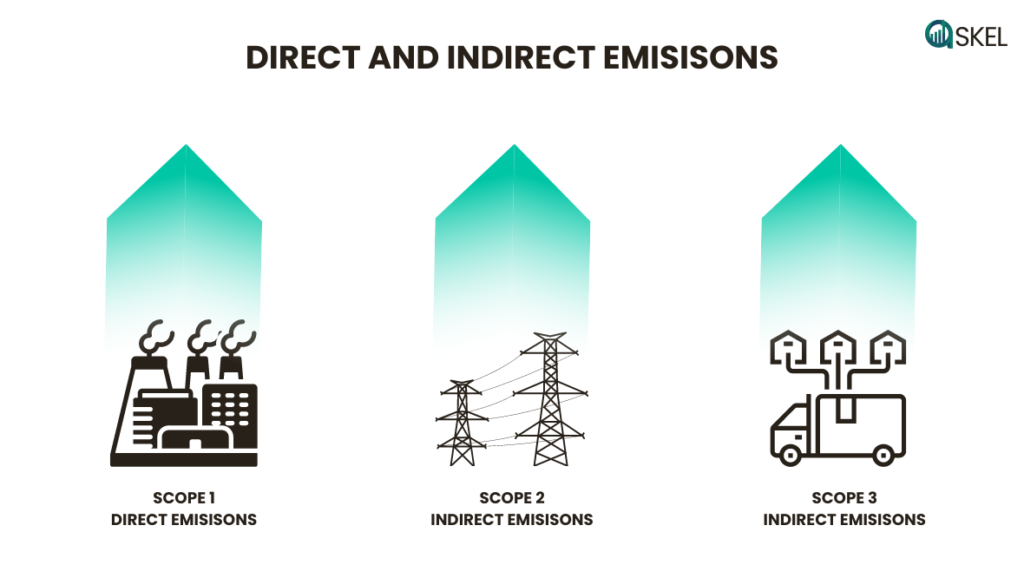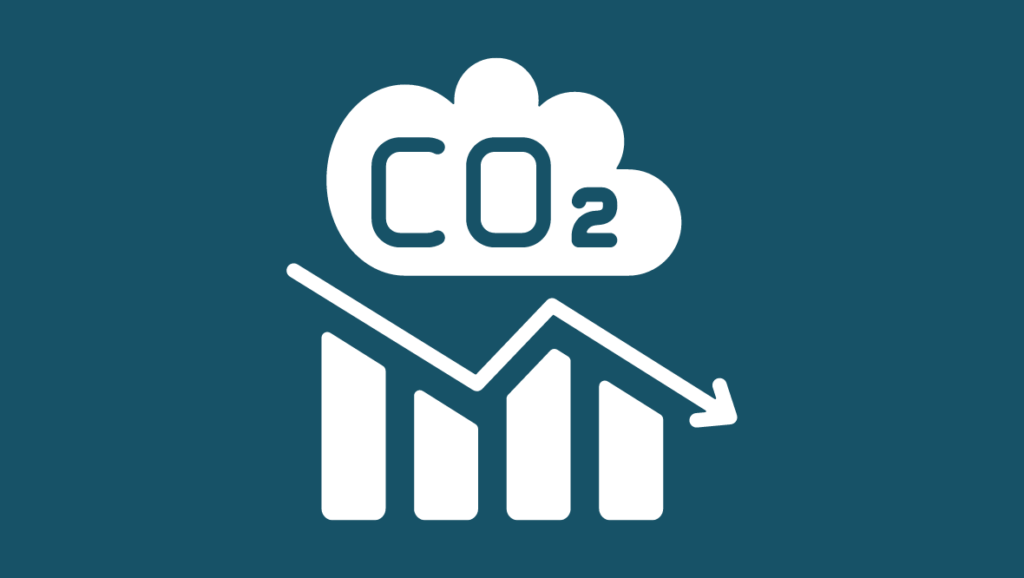How Businesses Can Reduce Their Carbon Footprint: A Guide

From policy to practice, learn about the process businesses undertake to reduce their carbon footprint/GHG emissions.
Today, reducing carbon footprint/ greenhouse gas (GHG) emissions has become an essential priority for businesses worldwide. As climate change continues to pose significant threats to our world and way of life, companies are increasingly recognizing their role in mitigating these impacts.
- The journey begins with Measuring Emissions, an essential step to establish a baseline and identify key sources of GHG emissions.
- Next, companies must focus on Setting An Emissions Reduction Target. Establishing clear, achievable goals is crucial for guiding efforts and tracking progress.
- Pinpointing Areas for Carbon Footprint Reduction involves analyzing operations to pinpoint areas for improvement.
- Reducing Emissions involves executing the planned actions, such as adopting energy-efficient practices, transitioning to renewable energy sources, and optimizing supply chains.
- Continuous Monitoring and Tracking Changes is essential to assess the effectiveness of reduction efforts. Regular tracking helps businesses stay on course and make necessary adjustments.
- Finally, Communicating and Reporting progress transparently builds trust with stakeholders and demonstrates a commitment to sustainability. Clear communication of achievements and ongoing efforts fosters accountability and encourages broader participation in environmental initiatives.
In this guide, we’ll explore each of these steps in detail, providing practical insights to help your business plan and implement changes to reduce its carbon footprint.
Measuring Emissions
Understanding your impact is the first step towards reduction. A greenhouse gas (GHG) inventory assesses your business’s emissions of six key gases identified in the Kyoto Protocol. These include CO2 (carbon dioxide) and CH4 (methane), alongside others like nitrous oxide and synthetic gases.
To get started, pinpoint all emission sources across your operations. Consider both direct emissions (e.g., burning fossil fuels on-site) and indirect emissions (e.g., transportation and waste disposal). Once all emission sources are identified, emissions factors are used to quantify them. These factors translate activities (e.g., electricity usage) into a specific amount of greenhouse gas emitted (e.g., kg of CO2 per kWh of usage). Finally, by summing all direct and indirect emissions, you calculate your total carbon footprint – your starting point for reduction strategies.

Setting An Emissions Reduction Target
Transforming ambition into action starts with a clear target. A reduction target can be tailored to your business. Consider a company-wide percentage reduction from a baseline year (a year chosen as a baseline to compare and assess progress towards achieving its reduction target in subsequent years), or a combination of diverse targets across departments (e.g., reduced electricity use) that contribute to an overall goal. The key is to choose a target that’s ambitious and inspires innovation, pushing your operations beyond routine practices and towards a more sustainable future.
Setting an emissions reduction target offers a multitude of benefits:
- Focus and Direction: It establishes a concrete goal, guiding your efforts and allowing you to measure progress effectively.
- Transparency and Accountability: Targets demonstrate your commitment to sustainability, both internally to employees and externally to stakeholders.
- Empowering Action: Departmental and individual sub-targets foster a culture of ownership and engagement in achieving reductions.
- Alignment with Sustainability Efforts: Setting targets may be required for certain government or voluntary programs, ensuring your initiatives align with broader sustainability goals.
Pinpointing Areas for Carbon Footprint Reduction
Your emissions inventory holds the key to unlocking reduction opportunities. Focusing on the largest emission sources first often yields the greatest impact. However, small low-cost solutions that do not require fundamental changes can also add up to significant emissions reduction. A phased and balanced approach is the key.
Consider bundling short-term and long-term initiatives with achievable targets. This ensures immediate results while tackling more complex, but potentially more impactful, areas. Additionally, like most businesses, start with your internal operations and then expand your focus upstream to suppliers and downstream to distributors etc. thereby, creating a comprehensive reduction strategy.
Reducing Emissions
Once reduction opportunities have been identified, businesses can start building strategy and setting goals for reduction for which the following factors should be considered:
- Impact and Cost: The ability to significantly reduce emissions and generate cost savings are key.
- Implementation: Factors like time to implement, and net return on investment (ROI) must be weighed.
- Internal Support: Dedicated champions within the company are crucial for successful implementation.
- Collaboration and Visibility: Consider opportunities for external support and the potential for positive brand impact.
- Additional Benefits: Look beyond emissions reduction to identify other related benefits such as for the environment and community.
- Barriers: Evaluate potential hurdles to implementation and develop strategies to overcome them.
Common Emissions Reduction Measures
One of the most impactful strategies is switching to renewable energy. Solar, wind, and geothermal power are clean and sustainable, significantly lowering greenhouse gas (GHG) emissions. Businesses can install renewable energy systems on-site, which, although initially costly, can reduce energy expenses in the long run. Alternatively, purchasing renewable energy from utility companies or buying renewable energy credits (RECs) can offset emissions and support green energy projects.
Implementing energy efficiency measures is another effective approach. Upgrading to energy-efficient lighting and appliances can drastically cut energy consumption and costs. Enhancing insulation, weather-stripping, and using programmable thermostats can improve a building’s energy efficiency, reducing the need for heating and cooling.
Waste reduction also plays a vital role in minimizing emissions. Businesses can focus on source reduction, recycling, and repairing and reusing materials to prevent waste generation. Proper waste segregation and choosing sustainable disposal providers can immediately impact waste emissions, particularly for small and medium-sized enterprises (SMEs).
Encouraging green commuting among employees is another strategy. Businesses can offer incentives for using public transportation, biking, or carpooling, and provide infrastructure to support these options. Offering telecommuting can further reduce travel-related emissions. For instance, Google’s incentive program for sustainable commuting is a notable example, rewarding employees for eco-friendly travel choices.
Lastly, implementing sustainable procurement practices ensures that the goods and services purchased minimize environmental and social impacts. This involves developing a sustainable procurement policy, assessing the environmental and social impacts of purchases, and choosing suppliers committed to sustainability. By integrating these practices, businesses can significantly reduce their carbon footprint and promote a greener economy.
Perhaps the best message to send to your company’s decision makers is that GHG management—that is, measuring your company’s GHG emissions, setting a reduction target, and implementing your reduction strategy—can build corporate value and earn benefits for your company.
Hot Climate Cool Commerce, WRI
Monitoring and Tracking Changes
Reducing your carbon footprint is an ongoing process. To ensure your efforts are effective, you need a system to monitor and track changes.
Regularly revisit your emissions inventory. By comparing data over time, you can identify areas where your reduction strategies are working well and pinpoint areas that might require adjustments.
Don’t underestimate the value of stakeholder engagement. Encourage them to report potential areas for improvement and use their feedback for further developing reduction strategies.
Monitoring allows you to measure the impact of your initiatives. This data is invaluable for demonstrating progress to stakeholders, securing buy-in for future plans, and ultimately, solidifying your commitment to a sustainable future.
Communicating and Reporting
Developing a comprehensive emissions inventory and implementing reduction strategies are crucial steps. But the journey doesn’t end there.
Transparency and accountability are key. Stakeholders like shareholders, employees, and the wider community are increasingly interested in a company’s commitment to environmental responsibility.
Communicate your progress! Utilise your website, annual reports, or dedicated sustainability reports to showcase your achievements in reducing emissions. Remember, clear and concise reporting is key. Following established guidelines for GHG accounting and reporting (such as by the GHG Protocol) ensures your communication is reliable, accurate and comprehensive.
Related Posts
6 Major Carbon Emission Sources for Your Business
5 Reasons Why Businesses Need to Set Emissions Reduction Targets


